
The Timeless Charm of Avignon Old Town
Discover the enchanting Avignon Old Town, a medieval treasure in Provence, France, offering a rich blend of history, culture, and vibrant local life.
Avignon Old Town, nestled in the heart of Provence, France, is a mesmerizing blend of history and culture. Once the seat of papal power in the 14th century, this medieval gem boasts a rich architectural heritage. As you wander through its cobbled streets, the majestic Palais des Papes rises before you, a testament to its storied past. The palace, with its grand halls and chapels, offers a fascinating glimpse into the lives of the popes who once resided here. The Pont Saint-Bénézet, another iconic landmark, stretches gracefully over the Rhône River. This ancient bridge, shrouded in legend, invites you to stroll along its remaining arches and imagine life in medieval times. The bustling Place de l'Horloge is the perfect spot to pause and soak in the local atmosphere. Lined with charming cafés and restaurants, this lively square is where you can enjoy a coffee or a glass of Provençal wine while watching street performers and locals go about their day. Art enthusiasts will be delighted by the numerous museums and galleries scattered throughout Avignon Old Town. The Musée du Petit Palais houses an impressive collection of Renaissance paintings, while the Collection Lambert showcases contemporary art in a beautifully restored mansion. As you explore further, you'll discover hidden courtyards, quaint boutiques, and artisanal shops offering unique souvenirs. The vibrant local markets, such as Les Halles d'Avignon, are a feast for the senses, brimming with fresh produce, cheeses, and regional delicacies. Avignon Old Town is not just a place to visit; it's a place to experience. Its festivals, such as the renowned Avignon Festival, bring the streets to life with theater, music, and dance. As the sun sets, the town takes on a magical glow, and the illuminated monuments create a picturesque backdrop for a leisurely evening stroll. Whether you're a history buff, an art lover, or simply seeking a charming getaway, Avignon Old Town promises an unforgettable journey through time.
Local tips in Avignon Old Town
- Visit the Palais des Papes early in the morning to avoid the crowds and enjoy a more peaceful experience.
- Take a guided tour to learn the fascinating history and legends of the Pont Saint-Bénézet.
- Try the local specialty, Papalines d'Avignon, a unique chocolate filled with an herbal liqueur.
- Explore the local markets, especially Les Halles d'Avignon, for fresh produce and regional delicacies.
- Book tickets in advance for the Avignon Festival to ensure you get to see popular performances.
- Wear comfortable walking shoes; the cobbled streets can be uneven and require sturdy footwear.
The Timeless Charm of Avignon Old Town
Avignon Old Town, nestled in the heart of Provence, France, is a mesmerizing blend of history and culture. Once the seat of papal power in the 14th century, this medieval gem boasts a rich architectural heritage. As you wander through its cobbled streets, the majestic Palais des Papes rises before you, a testament to its storied past. The palace, with its grand halls and chapels, offers a fascinating glimpse into the lives of the popes who once resided here. The Pont Saint-Bénézet, another iconic landmark, stretches gracefully over the Rhône River. This ancient bridge, shrouded in legend, invites you to stroll along its remaining arches and imagine life in medieval times. The bustling Place de l'Horloge is the perfect spot to pause and soak in the local atmosphere. Lined with charming cafés and restaurants, this lively square is where you can enjoy a coffee or a glass of Provençal wine while watching street performers and locals go about their day. Art enthusiasts will be delighted by the numerous museums and galleries scattered throughout Avignon Old Town. The Musée du Petit Palais houses an impressive collection of Renaissance paintings, while the Collection Lambert showcases contemporary art in a beautifully restored mansion. As you explore further, you'll discover hidden courtyards, quaint boutiques, and artisanal shops offering unique souvenirs. The vibrant local markets, such as Les Halles d'Avignon, are a feast for the senses, brimming with fresh produce, cheeses, and regional delicacies. Avignon Old Town is not just a place to visit; it's a place to experience. Its festivals, such as the renowned Avignon Festival, bring the streets to life with theater, music, and dance. As the sun sets, the town takes on a magical glow, and the illuminated monuments create a picturesque backdrop for a leisurely evening stroll. Whether you're a history buff, an art lover, or simply seeking a charming getaway, Avignon Old Town promises an unforgettable journey through time.
Iconic landmarks you can’t miss
Palais des Papes
Explore the majestic Palais des Papes in Avignon, a UNESCO World Heritage site showcasing grand Gothic architecture and rich papal history.

Jardin des Doms
Discover the tranquility and breathtaking views of Jardin des Doms, a historical park in Avignon perfect for relaxation and exploration.

Fort Saint-André
Discover the rich history and breathtaking views at Fort Saint-André, a stunning cultural landmark in Villeneuve-lès-Avignon, France.

Musée Lapidaire
Experience the rich history of the Roman era at Musée Lapidaire, Avignon's archaeological treasure trove showcasing exquisite ancient artifacts.

Remparts d'Avignon
Discover the historic Remparts d'Avignon, a medieval fortress that offers breathtaking views and a glimpse into the rich heritage of Avignon.

Palais du Roure
Explore the fascinating history and stunning architecture of Palais du Roure, a must-see museum in Avignon that showcases Provence's rich cultural heritage.
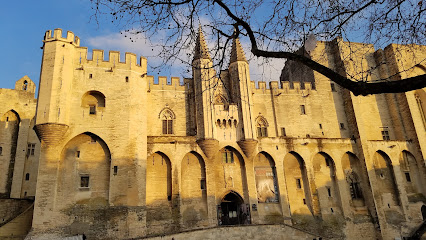
Tour Saint Jean
Explore the historical marvel of Tour Saint Jean in Avignon, where history, architecture, and stunning views come together in a captivating experience.

Gardens at the Popes’ Palace
Discover the tranquil beauty of the Gardens at the Popes’ Palace in Avignon, where lush landscapes meet historical charm and panoramic views.
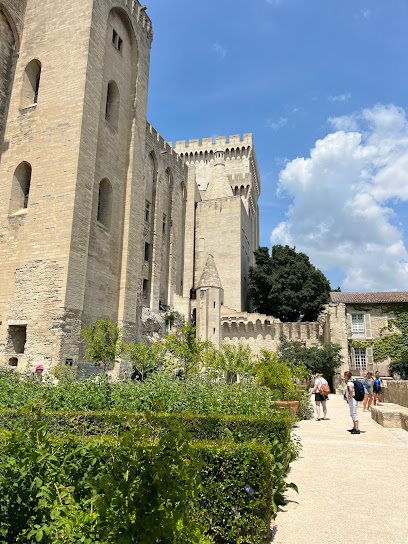
Hôtel des Monnaies
Discover the Hôtel des Monnaies in Avignon, a stunning historical site that showcases the rich heritage and architectural beauty of the city.

MONUMENT DU COMTAT
Discover the Monument du Comtat, a stunning historical landmark in Avignon showcasing rich culture and history amidst charming streets.

Place du Palais
Explore the historical charm of Place du Palais, a stunning square in Avignon, surrounded by magnificent architecture and vibrant local culture.

La Via Avenio km 0
Explore La Via Avenio km 0 in Avignon, a historical landmark that marks the start of the ancient Roman road, blending history with scenic beauty.
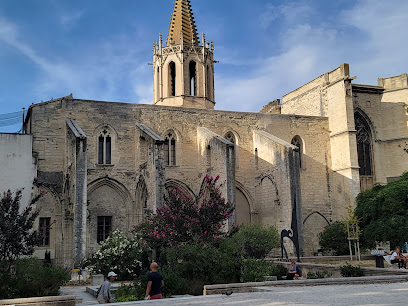
Pinie
Experience the breathtaking views and serene atmosphere at Pinie, a scenic tourist attraction in Avignon, perfect for relaxation and photography.
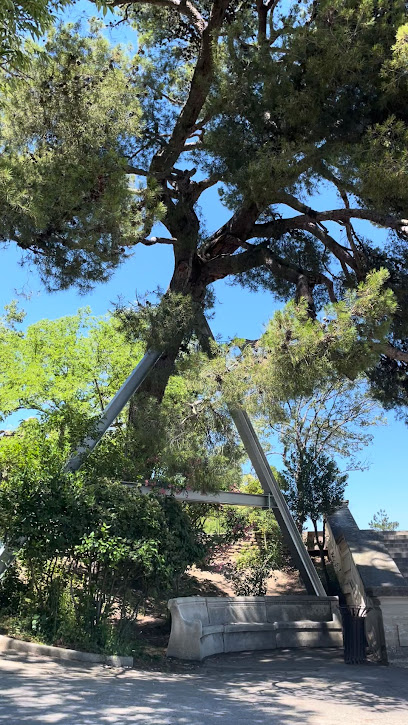
Unmissable attractions to see
Palais des Papes
Experience the grandeur of the Palais des Papes in Avignon, a remarkable historical landmark and UNESCO World Heritage site steeped in papal history.

Jardin des Doms
Explore the serene Jardin des Doms in Avignon - a lush garden offering stunning views, historical charm, and a peaceful retreat in the heart of the city.

Calvet Museum
Explore the Calvet Museum in Avignon, a treasure trove of art and history set in a beautiful 18th-century mansion with stunning gardens.

Musée du Petit Palais
Explore the exquisite collection of Renaissance masterpieces at the Musée du Petit Palais in Avignon, a cultural gem of France.

Palais du Roure
Explore the historic Palais du Roure in Avignon, a captivating museum showcasing the rich cultural heritage of the region in a stunning architectural setting.
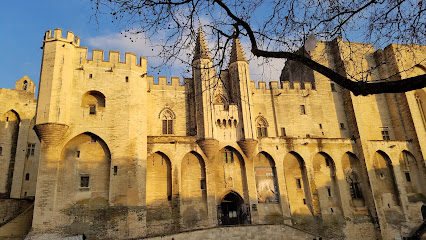
Tour Saint Jean
Discover the charm of Avignon at Tour Saint Jean, a historical landmark steeped in history and architectural beauty, offering stunning views and rich narratives.

Gardens at the Popes’ Palace
Discover the serene beauty and historical charm of the Gardens at the Popes’ Palace in Avignon, a perfect retreat for tourists and nature lovers alike.

Point de Vue direction Pont d'Avignon
Discover stunning views and rich history at the Point de Vue direction Pont d'Avignon, the perfect observation deck for any traveler in Avignon.

Place du Palais
Experience the rich history and vibrant culture of Avignon at Place du Palais, home to stunning architecture and lively street performances.
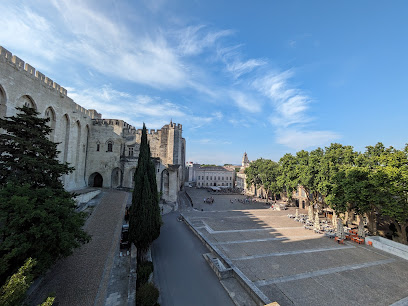
Pinie
Experience the serene beauty and stunning views from Pinie in Avignon, a perfect retreat for nature lovers and photography enthusiasts.

Essential places to dine
Le Vintage
Discover the essence of French cuisine at Le Vintage in Avignon – where tradition meets modern culinary artistry.

Restaurant L'Épicerie
Discover authentic French dining at Restaurant L'Épicerie in Avignon, where traditional Provençal flavors meet modern culinary artistry.

Restaurant Bar à Vin Le 46
Experience exquisite Mediterranean dining at Restaurant Bar à Vin Le 46 in Avignon - a must-visit culinary destination for wine lovers.

Le Goût du Jour
Experience exquisite modern French cuisine at Le Goût du Jour in Avignon - where tradition meets innovation for an unforgettable dining adventure.
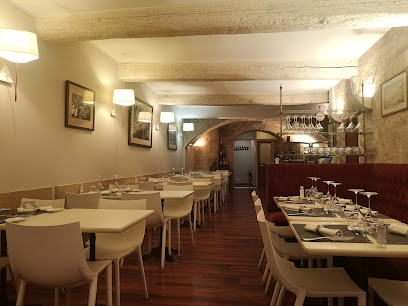
Restaurant Fou de Fafa
Experience authentic French cuisine at Restaurant Fou de Fafa in Avignon, where every dish tells a story of tradition and flavor.
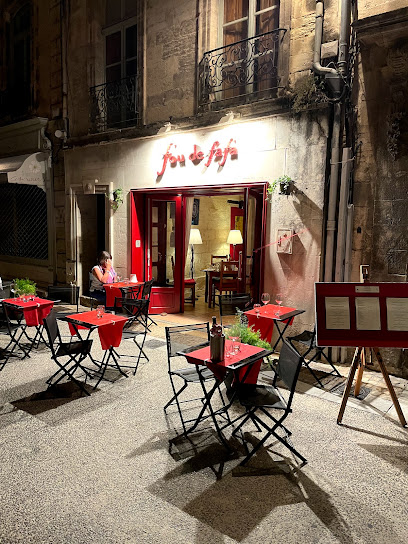
Restaurant La Cour du Louvre
Experience authentic French cuisine at Restaurant La Cour du Louvre in Avignon - where tradition meets taste.

L'Essentiel
Experience exquisite modern haute French cuisine at L'Essentiel in Avignon, where culinary artistry meets elegant dining.

Restaurant Le Coin Caché
Experience authentic French cuisine at Restaurant Le Coin Caché in Avignon – a hidden gem that promises delightful flavors and charming ambiance.

Restaurant Maison de la Tour
Experience the best of modern French cuisine at Restaurant Maison de la Tour in Avignon – where tradition meets innovation.

HOTEL D'EUROPE Restaurant La Vieille Fontaine
Indulge in exquisite fine dining at HOTEL D'EUROPE Restaurant La Vieille Fontaine in Avignon, where local flavors meet culinary artistry.

Markets, malls and hidden boutiques
Les Halles d'Avignon
Discover the vibrant flavors and local produce at Les Halles d'Avignon, the heart of culinary delight in Provence.

CAP SUD - Le Centre Commercial d'Avignon
Discover the vibrant shopping experience at CAP SUD in Avignon, featuring a wide array of stores, dining options, and entertainment for every visitor.

E.Leclerc AVIGNON
Discover the best of French cuisine at E.Leclerc Avignon, featuring fresh produce, artisanal goods, and local specialties in a vibrant supermarket.

Galeries Lafayette
Discover the essence of French shopping at Galeries Lafayette in Avignon, where fashion meets elegance in a vibrant retail setting.
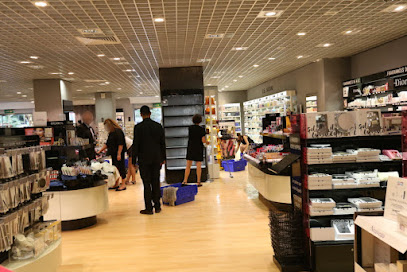
L'Épicerie de Ginette
Discover the authentic flavors of Avignon at L'Épicerie de Ginette, an affordable bistro offering traditional French cuisine in a cozy atmosphere.

The Cookies Avignon
Indulge in a delectable array of gourmet cookies at The Cookies Avignon, a must-visit sweet spot in the heart of the city.

Promod
Explore the chic styles of French fashion at Promod in Avignon, where trendy meets affordable for the perfect shopping experience.

Les Demoiselles d'Avignon
Discover unique fashion finds and artisanal gifts at Les Demoiselles d'Avignon, a charming consignment shop in the heart of Avignon.
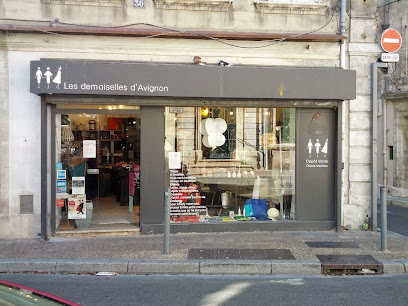
Cardel chaussures
Discover stylish footwear and boutique charm at Cardel Chaussures in Avignon, a premier destination for fashion-loving tourists.

Jean Rian - Chaussures & accessoires
Discover the exquisite footwear collection at Jean Rian in Avignon, where style meets comfort in every step.

Gallery & Boutique John Gormsen
Explore contemporary art and unique gifts at Gallery & Boutique John Gormsen in Avignon, a vibrant destination for creativity and culture.

La Maison Avignonnaise
Explore the charm of La Maison Avignonnaise, a delightful store in Avignon offering unique artisanal products and local treasures.

Atelier du Palais
Discover the artisanal charm of Atelier du Palais in Avignon, where local craftsmanship meets exquisite gift baskets filled with gourmet delights.

Eric et les chics filles
Discover the charm of handcrafted artistry at Eric et les chics filles in Avignon, where every piece tells a unique story.

Avignon en Provence
Explore the heart of Provence through unique gift baskets at Avignon en Provence, where local flavors and artisanal products come together.

Essential bars & hidden hideouts
O'Collins's Irish Pub
Discover the authentic Irish pub experience at O'Collins's in Avignon, featuring lively music, delicious food, and a warm atmosphere.

The Red Sky
Discover the vibrant ambiance of The Red Sky, Avignon's must-visit bar for a taste of local culture and exquisite drinks.

Beer O'Clock
Discover the vibrant atmosphere of Beer O'Clock in Avignon, where local brews and fine wines meet a cozy ambiance for an unforgettable experience.

La Cave Des Pas Sages
Experience the essence of Avignon at La Cave Des Pas Sages, a cozy bar and café offering local flavors and a vibrant atmosphere.

Au Fût et à mesure Avignon
Discover the lively atmosphere of Au Fût et à mesure Avignon, where craft beer meets live music and unforgettable experiences.

Barberousse Avignon
Discover Barberousse Avignon, where vibrant nightlife meets authentic local culture in a lively bar setting.

Lalogène
Discover the charming Lalogène bar in Avignon, offering a cozy atmosphere, a wide selection of drinks, and a taste of local culture.

Bar La place ️| Terrasse Cocktail Music
Discover Avignon's nightlife at Bar La Place: a vibrant bar with cocktails, live music, and a welcoming terrace atmosphere.
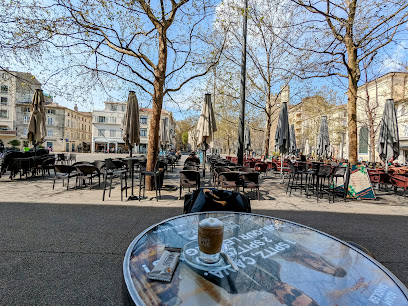
Pub Z
Discover the heart of Avignon's nightlife at Pub Z, where vibrant atmosphere and affordable drinks create the perfect evening.
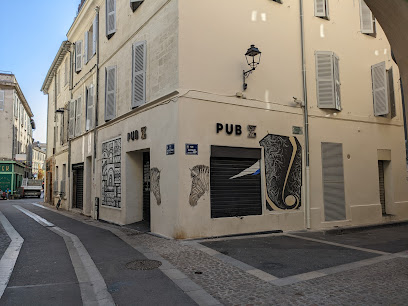
Le Central Bar
Experience Avignon's nightlife at Le Central Bar, where exquisite cocktails and fine wines meet a vibrant atmosphere in the heart of the city.

Local Phrases
-
- HelloBonjour
[bohn-zhoor] - GoodbyeAu revoir
[oh ruh-vwahr] - YesOui
[wee] - NoNon
[nohn] - Please/You're welcomeS'il vous plaît / De rien
[seel voo pleh / duh ryen] - Thank youMerci
[mehr-see] - Excuse me/SorryExcusez-moi / Désolé
[ex-kew-zay mwah / day-zoh-lay] - How are you?Comment ça va?
[koh-mohn sah vah] - Fine. And you?Bien. Et vous?
[byen. ay voo] - Do you speak English?Parlez-vous anglais?
[par-lay voo ahn-glay] - I don't understandJe ne comprends pas
[zhuh nuh kohm-prahn pah]
- HelloBonjour
-
- I'd like to see the menu, pleaseJe voudrais voir le menu, s'il vous plaît
[zhuh voo-dray vwahr luh meh-nyoo, seel voo pleh] - I don't eat meatJe ne mange pas de viande
[zhuh nuh mahnj pah duh vyand] - Cheers!Santé!
[sahn-tay] - I would like to pay, pleaseJe voudrais payer, s'il vous plaît
[zhuh voo-dray pay-yay, seel voo pleh]
- I'd like to see the menu, pleaseJe voudrais voir le menu, s'il vous plaît
-
- Help!Au secours!
[oh suh-koor] - Go away!Allez-vous en!
[ah-lay vooz ahn] - Call the Police!Appelez la police!
[ah-pay-lay lah poh-lees] - Call a doctor!Appelez un médecin!
[ah-pay-lay uh may-suhn] - I'm lostJe suis perdu
[zhuh swee pair-doo] - I'm illJe suis malade
[zhuh swee mah-lahd]
- Help!Au secours!
-
- I'd like to buy...Je voudrais acheter...
[zhuh voo-dray ah-shuh-tay] - I'm just lookingJe regarde juste
[zhuh ruh-gard zhuhst] - How much is it?Combien ça coûte?
[kohm-byen sah koot] - That's too expensiveC'est trop cher
[say troh shair] - Can you lower the price?Pouvez-vous baisser le prix?
[poo-vay voo bay-say luh pree]
- I'd like to buy...Je voudrais acheter...
-
- What time is it?Quelle heure est-il?
[kell ur eh-teel] - It's one o'clockIl est une heure
[eel eh oon ur] - Half past (10)Dix heures et demie
[dees urz ay duh-mee] - MorningMatin
[mah-tahn] - AfternoonAprès-midi
[ah-pray mee-dee] - EveningSoir
[swahr] - YesterdayHier
[yehr] - TodayAujourd'hui
[oh-zhoor-dwee] - TomorrowDemain
[duh-mahn] - 1Un
[uhn] - 2Deux
[duh] - 3Trois
[twah] - 4Quatre
[katruh] - 5Cinq
[sank] - 6Six
[sees] - 7Sept
[sept] - 8Huit
[wheet] - 9Neuf
[nurf] - 10Dix
[dees]
- What time is it?Quelle heure est-il?
-
- Where's a/the...?Où se trouve...?
[oo suh troov] - What's the address?Quelle est l'adresse?
[kell eh lah-dress] - Can you show me (on the map)?Pouvez-vous me montrer (sur la carte)?
[poo-vay voo muh mohn-tray (soor lah kart)] - When's the next (bus)?Quand est le prochain (bus)?
[kahn eh luh proh-shahn (bus)] - A ticket (to ....)Un billet (pour ...)
[uhn bee-yay (poor)]
- Where's a/the...?Où se trouve...?
History of Avignon Old Town
-
Avignon's history begins in Roman times when it was known as Avenio, a strategic settlement due to its location along the Rhône River. The Romans established a colony here around 30 BC, contributing to the development of infrastructure such as roads, bridges, and aqueducts, which laid the groundwork for future urban growth.
-
The most significant period in Avignon's history occurred during the 14th century when it became the seat of the papacy. From 1309 to 1377, seven popes resided in Avignon, leading to a flourishing of art and architecture. The Palais des Papes, a UNESCO World Heritage Site, was constructed during this time and remains a symbol of the city’s ecclesiastical importance.
-
The Great Schism of 1378, which divided the Catholic Church between two rival popes, had profound impacts on Avignon. During this period, the city became a center of political intrigue and religious conflict, further solidifying its role as a pivotal location in European religious history.
-
The Renaissance brought a cultural revival to Avignon, as artists and scholars were drawn to the city’s wealth and prestige. This period saw the construction of exquisite buildings, including the Petit Palais, which now houses an art museum, and the enhancement of public spaces that reflect the artistic spirit of the time.
-
In the 19th and 20th centuries, Avignon saw significant urban development and modernization. The introduction of the railway in the mid-19th century improved accessibility, leading to increased tourism. The annual Festival d'Avignon, founded in 1947, has become one of the most important contemporary performing arts festivals, showcasing the city's ongoing cultural vibrancy.
Avignon Old Town Essentials
-
Avignon Old Town is easily accessible from various neighborhoods in Avignon. If you're coming from the Avignon TGV train station, take bus line 1 or a taxi, which will take about 15 minutes. From the historical center, you can explore on foot, as most attractions are within walking distance. If you're arriving from other nearby towns, local trains and buses connect to Avignon frequently.
-
Avignon Old Town is pedestrian-friendly, making walking the best way to explore its narrow streets and historic sites. Bicycles are available for rent at various locations, and there are bike lanes for safer travel. Public transport includes buses that connect to other neighborhoods, but within the Old Town, walking is the most convenient option.
-
Avignon Old Town is generally safe for tourists. However, standard precautions should be observed. Avoid poorly lit areas at night and keep your belongings secure, especially in crowded locations. While no specific areas are noted for high crime targeting tourists, it's advisable to remain vigilant and aware of your surroundings.
-
In case of emergency, dial 112 for immediate assistance in France. The local police station and medical facilities are located within the Old Town. It's recommended to have travel insurance that covers emergencies. Pharmacies are available for minor health issues, and many staff members speak English.
-
Fashion: Do dress modestly, especially in churches. Don't wear overly casual clothing in religious sites. Religion: Do respect local customs; cover your head when visiting certain churches. Public Transport: Do be polite and offer your seat to those in need. Don't eat or drink on public transport. Greetings: Do greet with a friendly 'Bonjour' and a smile. Eating & Drinking: Do try the local cuisine and enjoy meals at outdoor cafés. Don't rush your dining experience; meals are often leisurely.
-
To experience Avignon Old Town like a local, visit the colorful Les Halles market in the morning for fresh produce and local specialties. Attend a local festival or event if your visit coincides; the Festival d'Avignon in July is a must-see. Take time to explore lesser-known streets and enjoy a coffee in one of the hidden squares to soak up the atmosphere.
Nearby Cities to Avignon Old Town
-
Things To Do in Nîmes
-
Things To Do in Aix-en-Provence
-
Things To Do in Montpellier
-
Things To Do in Marseille
-
Things To Do in Grenoble
-
Things To Do in Saint-Tropez
-
Things To Do in Cannes
-
Things To Do in Nice
-
Things To Do in Lyon
-
Things To Do in Les Moneghetti
-
Things To Do in Moneghetti
-
Things To Do in Fontvieille
-
Things To Do in La Condamine
-
Things To Do in Monaco-Ville
-
Things To Do in Monte Carlo













